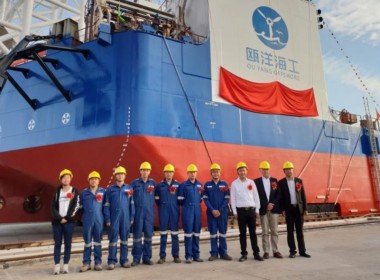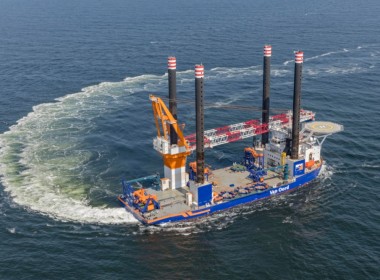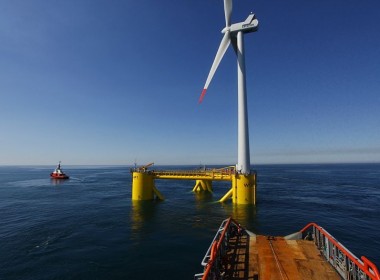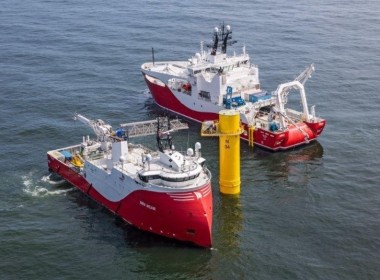COLUMN | Who is missing the wind boat? Newbuilds, refits and repurposed vessels enter the offshore wind installation game [Offshore Accounts]
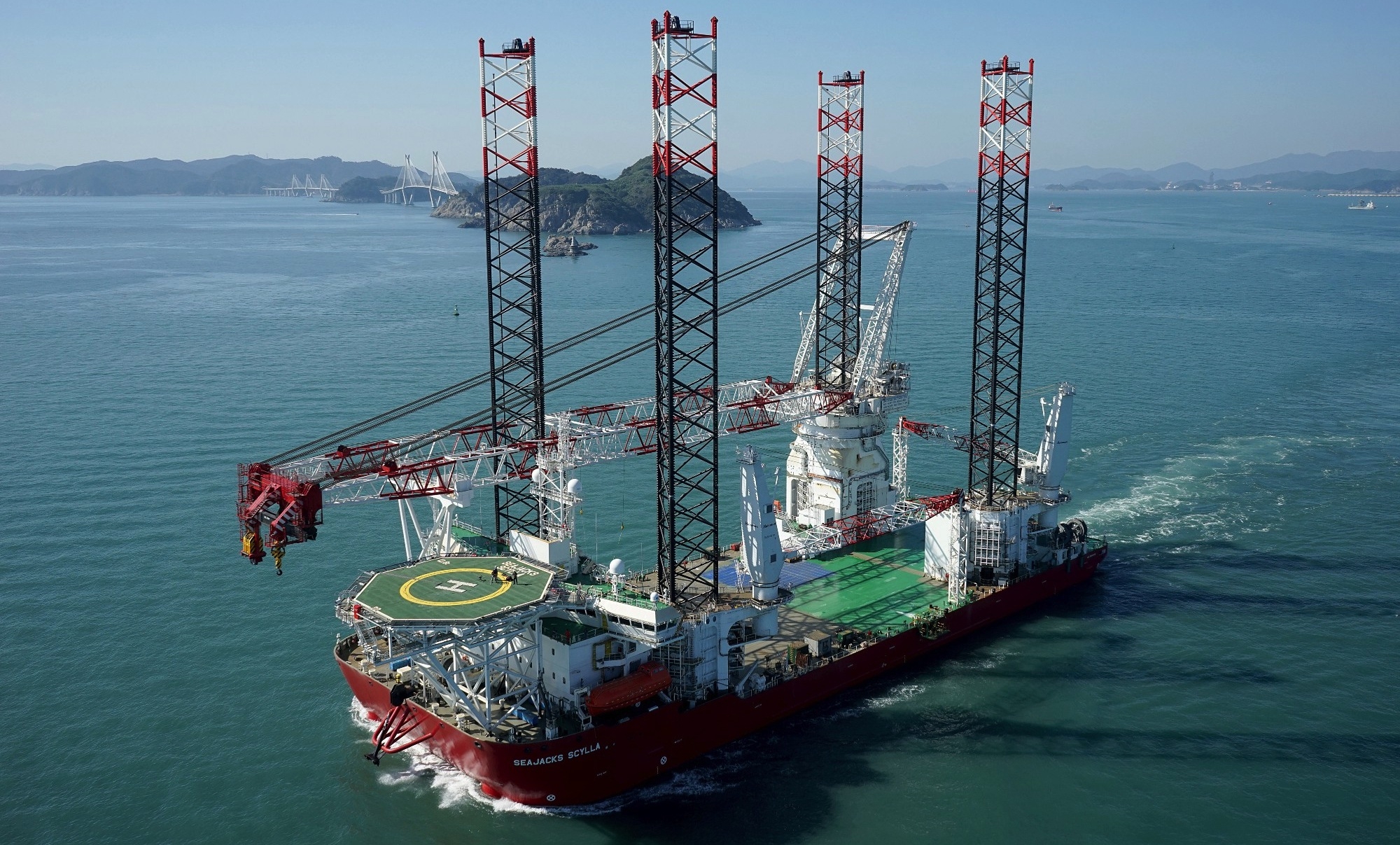
The glorious early summer weather in Europe has seen records for renewable power shattered all over the continent. On May 26 solar wind, biomass and hydro together provided almost 40 per cent of UK electricity, exceeding the 30 per cent from gas, and the output of all the UK’s nuclear power stations.
Of the renewals, wind attracts the most interest from offshore players. Across Europe new windfarms are being installed, with turbines growing more powerful and being placed in ever-deeper water. In April, the renewables industry passed a milestone when Dong Energy announced it would build two new German offshore windfarms without any government subsidies whatsoever. Dong said it would rely on wholesale electricity market prices only for the projects in the North Sea. It then capped a remarkable run by announcing the sale of all its oil and gas fields in the North Sea for over US$1 billion, to become a pureplay renewables player.
So how should the offshore industry react to the rise of renewable energy in Europe? New players are carving out leadership in the provision of the specialist vessels for installing windfarms.
The installation segment is very fluid – as turbines increase in capacity, so the cranes on installation vessels are getting larger too. Despite their huge size, the turbine blades and nacelles are actually relatively light. The largest turbine currently manufactured by Vestas, for instance, weighs “just” 390 tonnes, and its blades are only 35 tonnes each. The challenges arise with the foundations in which the turbines are placed – giant steel cylinders piled into the seabed.
The monopiles for the Horns Rev wind farm off the Danish coast were installed in 2002. They were four metres in diameter and weighed between up to 230 tonnes. Fast forward to 2016 and the same manufacturer in the Netherlands produced the foundations for the for the Galloper Wind Farm off the Suffolk coast of the UK. The Galloper monopiles are 80 metres long and nearly eight metres diameter. They weigh over five times more than the Horns Rev foundations.
New players entering the installation market
As a result, whilst there are 36 wind turbine installation vessels in service worldwide, according to shipbrokers Kennedy Mar in London, there are only a handful that can install the current generation of monopiles. The largest new-build, jack-up installation vessel today is Seajacks Scylla, which entered service in 2016. The jack-up is equipped with a Huisman main crane wrapped around one of its legs with a safe working load of over 1,500 tonnes. Seajacks operates four smaller, other installation jack-ups, and is now one of the largest vessel owners in the sector.
Three players well known in the offshore sector have assets capable of installing large turbines, Swire Pacific’s Blue Ocean division with two 2012-built units with 1,200 tonne wrap-around cranes; Vroon, with its MPI subsidiary, which has three jack ups with 1,000-tonne cranes; and rig owner Fred Olsen, whose Fred Olsen Windcarrier division has two 800-tonne capable units. Unfortunately, all three of these offshore players look strategically squeezed – with small fleets which are being technically outclassed by the larger players at a time when their core offshore businesses are bleeding money. They may need to get bigger, or get out.
Indeed, the lead of Seajacks Scylla looks temporary, as Dutch contractor Van Oord has announced an upgrade to their installation vessel Aeolus, which will involve replacing the existing 900-tonne crane with a record-breaking 1,600-tonne Huisman crane. This is part of a trend which has seen dredging companies carve out successful niches in the wind turbine installation business.
Complementing their existing rock dumping and cable laying businesses, they provide wind farm operators with “one stop shop” solutions to install turbines, cables and connections to the shore. Van Oord’s rival Jan de Nul owns a DP jack up with a 1,300-tonne crane, and DEME’s Geoseas division has the other 1,500-tonne jack-up Innovation, and a fleet of smaller jack-ups, with a DP2 crane ship due to deliver in 2019 from Cosco in China.
Subsea7 has also muscled its way into the sector with the full acquisition of Seaway Heavy Lift and can offer the same integrated packages as the Dutch players. The dredging players and Subsea7 are used to taking on lump sum risk, managing multiple subcontractors, and providing complex project management; the offshore-related players like Swire and Vroon, much less so.
“Wind energy is currently still dependent on the hydrocarbon economy”
So, the future looks increasingly to lie with players able to do more than just lift foundations and turbines into place, but to manage the whole field installation from load outs to tie-ins to the national power grids. As a result, cable-lay players like Ocean Team and Siem Offshore Contractors are increasingly subcontracting their cable-ships to the integrators. The value add in the sector appears to be coming from the ability to plan, integrate and execute the different aspects of the wind farm construction.
There are two challenges to this picture of every larger piles and ever more complex construction, however. The first is Statoil’s Hywind system, which attempts to break the industry paradigm of simply building bigger and taller turbines mounted on bigger, heavier foundations in deeper and deeper water. Hywind uses moored turbines, installed by good old anchor handlers, rather than piled foundations. So, there is no need for massively expensive DP jack ups, just plain AHTSs to lay conventional chain and wire anchor moorings. This reduces the installation costs significantly, and enables turbines to be installed in deeper waters further away from the coast, where the winds are strongest.
The second challenge is harder. British science journalist Matt Ridley, writing in The Spectator, has challenged the environmental credibility of the whole wind power industry, pointing out it takes about half a tonne of coal to make a tonne of steel, so that each of Galloper’s turbines and foundations will require 800 tonnes of coal to manufacture. Wind power itself may be carbon free, but building the windfarms requires huge inputs of steel and oil. Thus, wind energy is currently still dependent on the hydrocarbon economy for its existence, and has a sizeable carbon footprint.


